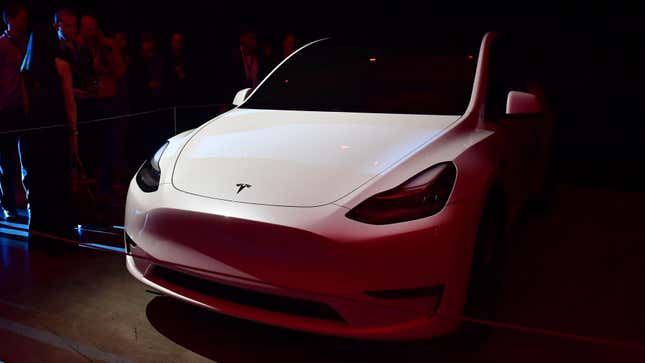
Tesla said this week that it would stop using radar on new Model 3s and Model Ys, leading the National Highway Traffic Safety Administration to say they no longer have some advanced safety features. Occasional Tesla antagonist Consumer Reports agrees it could be a problem.
At issue are forward collision warning and automatic emergency braking, two features that relied on radar in Model 3s and Model Ys, along with lane departure warning and dynamic brake support, which kicks in if the car senses you aren’t braking enough before a potential collision. NHTSA said Wednesday that those features on new Model Ys and Model 3s “do not have NHTSA’s check mark” because NHTSA, “only includes check marks for the model production range for the vehicles tested.”
Tesla is transitioning to Tesla Vision, which is based on cameras and which will perform many of the tasks radar did, but as the company said in a blog post, “cars with Tesla Vision may be delivered with some features temporarily limited or inactive.”
That also means that for CR and the Insurance Institute for Highway Safety, new Model 3s aren’t good enough for their top awards.
From Consumer Reports:
Because of the change, Consumer Reports no longer lists the Model 3 as a Top Pick, and IIHS plans to remove the Model 3’s Top Safety Pick+ designation. NHTSA’s website has already been updated to reflect the availability of these safety features.
Tesla did not respond to CR’s request for comment.
“It is extremely rare for an automaker to remove safety features from a vehicle during a production run, even temporarily, but this isn’t the first time that Tesla has done this,” says Jake Fisher, senior director of CR’s Auto Test Center. In 2016, some Tesla Model X vehicles were sold without active AEB, a problem that took six months for Tesla to rectify through a software update. And in 2018, some owners lost AEB for more than a day after a software update.
It sounds like both IIHS and CR are in wait-and-see mode, like NHTSA.
“With over-the-air updates, Tesla can add and remove features on their vehicles over time,” Fisher says. “We update our scores when key features are added or removed.”
The IIHS is currently updating its website to reflect the change, says Joe Young, a spokesperson for the nonprofit safety agency funded by auto insurers. The ratings page for the Model 3 will indicate that vehicles built before April 27, 2021, still receive the Top Safety Pick+ designation, and that vehicles without radar may regain the award if the safety features return. “We do have plans to test the updated system, however, so it’s possible that disclaimer could be removed if it performs well,” says Young.
If you buy a Model 3 or Model Y right now, you are participating in a vast safety experiment and maybe most Tesla buyers know that’s what they’re signing up for, or maybe they don’t. At this point, with the track record that Tesla has established, I would hope the former is true, though organizations like CR are here to help avoid the latter. Buyer, as always, beware.